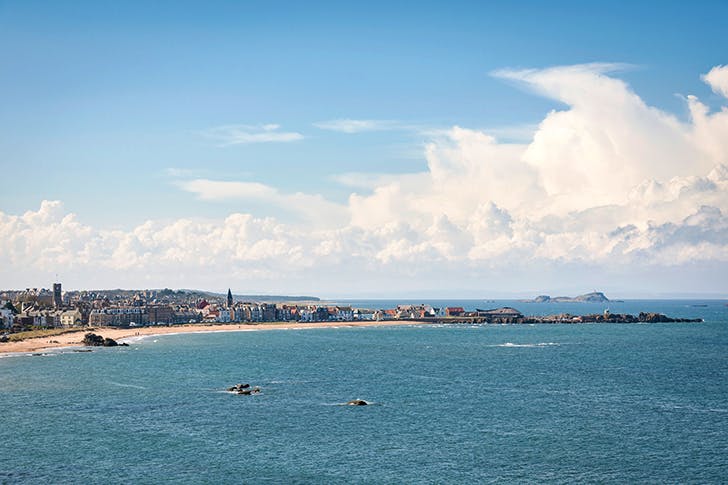My home town is better than yours. Don’t take my word for it. This month North Berwick was crowned ‘best place to live’, at least in Scotland, thanks in part to its good schools, community spirit and low crime. The news hasn’t come as a surprise to locals — it’s a town perched between an extinct volcano and the North Sea on the south shore of the Firth of Forth, so we know it’s something special. But there’s more to us than pretty streets, beaches and fish and chips.
The first thing to note about North Berwick is that it is in Scotland. This may seem obvious, but it’s often confused with Berwick-upon-Tweed, 40 miles south in England. Matters aren’t helped by Scots from — to borrow a phrase from President Trump — ‘serious Scotland’ who find North Berwick so ‘posh’ it basically counts as English.
It wasn’t always seen to be so grand. North Berwick had humble beginnings. The harbour was built in the 12th century to ferry pilgrims crossing the Firth of Forth to worship the relics of St Andrew in Fife. It hasn’t always been the ‘best place to live’ either, particularly if you were a woman in the 16th century. When the pilgrims stopped coming, the harbour is said to have fallen prey to black magic, with witches holding covens on Auld Kirk Green.That inspired Robert Burns to write ‘Tam o’ Shanter’ — and King James VI, who blamed local witches for the stormy weather he experienced sailing to Copenhagen to marry Princess Anne of Denmark, to mount an investigation that implicated 70 people and ended with torture and burnings at the stake.
Things started to look up again in the 1800s, when the Victorians offered the area a tourism boost — rebranding it a golfing destination (complete with the slogan ‘from pilgrim port to golf resort’). Visitors still come for the golf today, along with the beaches and wildlife. There are several islets off the coast: Craigleith, the Lamb and Fidra. But the island that gets the most attention is the Bass Rock. Featured in Robert Louis Stevenson’s Catriona, it’s a 300-million-year-old 351ft volcanic plug, which sits in the sea a short distance away from the land-bound North Berwick Law, an extinct volcano that looks out over the town from 600ft above.
Nowadays, adrenalin junkies use the Law as the climax of the North Berwick run every August (sprinting three miles from the harbour to the top of the hill and back), but over on Bass Rock, gannets rule the roost; more than 150,000, suave and yellow-tipped, take residence at peak season. They can be viewed from the safety of shore at the Scottish Seabird Centre.
All of which goes to show that North Berwick has managed to keep its magic even though it may have lost its witches. The best place to live in Scotland — and the best time to live there too.
Got something to add? Join the discussion and comment below.
Get 10 issues for just $10
Subscribe to The Spectator Australia today for the next 10 magazine issues, plus full online access, for just $10.
You might disagree with half of it, but you’ll enjoy reading all of it. Try your first month for free, then just $2 a week for the remainder of your first year.















Comments
Don't miss out
Join the conversation with other Spectator Australia readers. Subscribe to leave a comment.
SUBSCRIBEAlready a subscriber? Log in